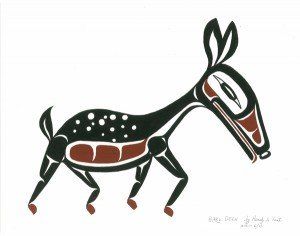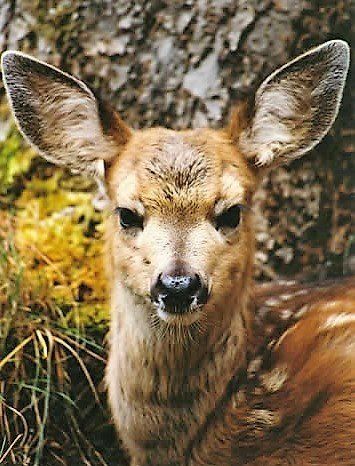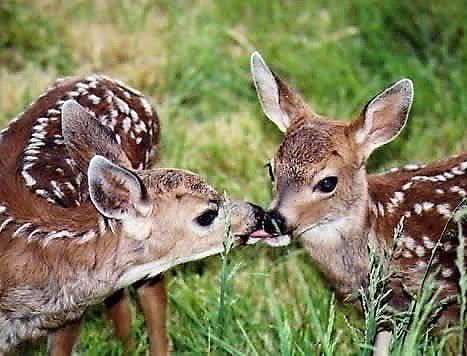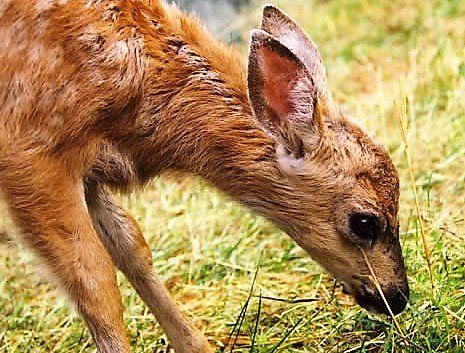What is here today can be gone tomorrow. Every life is a miracle, every life deserves a second chance.
- Gail Martin -
Deer

Description
- About 100 types of deer; cud chewers (ruminants).
- Brownish coat camouflages the deer within its surroundings.
- Moults in fall to allow a thick, winter coat to grow in; dull and grey for winter camouflage.
- Fawns (also called calves) are reddish- brown and are covered in small, white spots.
- Tail is 11 to 14 inches long; underside is white.
- Males are called bucks, bulls or stags; females are called does, cows or hinds and tend to associate in groups.
- Only animal possessing antlers (usually only males).
- Well-developed sense of hearing — large ears funnel sound into the ear canal; specialized muscles in the ears allow them to turn in any direction without head movement.
- Eyes placed towards the side of the head provide a 310 degree view without moving; well-adapted night vision.
- Acute sense of smell to warn them of predators.
- Long and powerful legs; can reach up to 35 mph and jump up to 10 feet.
- Two-toed, hoofed mammals (ungulates).
- Mating occurs between October and January, and gestation takes about 200 days. Litters will consist of 1 to 3 fawns.

Unique Facts
Deer antlers are the fastest growing living tissue on Earth. Growing antlers develop a very sensitive tissue, known as velvet, on the outside. When antlers are fully grown, this layer is shed (annually) to reveal a solid bone-like structure underneath.
Habitat
Deer are primarily woodland animals and require some cover for protection. They prefer low-growth and reside in pine, swamp and woodlot areas.
Diet
Deer enjoy many different plant species, including the leaves, stems and buds of woody plants. They love the seeds of many agricultural crops, fruit and hard mast (acorns, beechnuts and other wild nuts, which are important for fattening for the oncoming winter season).
Grasses, barks, twigs, sprouts, mosses, lichens and fungi are also favourites.

Solutions
The only real solution is to eliminate access to the food supply. When designing a yard, choose plants not palatable to deer.
Otherwise, try using taste repellents (read labels to ensure safety to plants, deer and humans). Paint or spray commercial preparations using thiram, other bitter agents or Deer-Away (smell/taste deterrent) onto trees, trunks, foliage and gardens. Human hair or pet fur spread around the area or hung in mesh bags sometimes helps, as well as mothballs and tankage (dried animal fecal and sewage residues available as organic or natural fertilizers).
Visual deterrents hung around the yard are effective: mirrors, tinfoil strips or scarecrows. You can also set up a motion-sensor water sprayer or a wind-generated noisemaker. Bushes and trees can be draped with plastic netting. Keep pet foods inside, secure garbages and composts, and pick up fruit fallen from trees each day.
Install a permanent or temporary fence, considering the topography and the size of the area, and the species of deer (catalogs containing designs are obtained through hardware and agricultural shops). Electric or specialized fences are more effective, but all well-built ones are nearly 100 percent effective when installed correctly.
Deer damage is seasonal, with the least troublesome times between July and September. Breaking their habitual routines does take time, patience, and some effort on your part.











